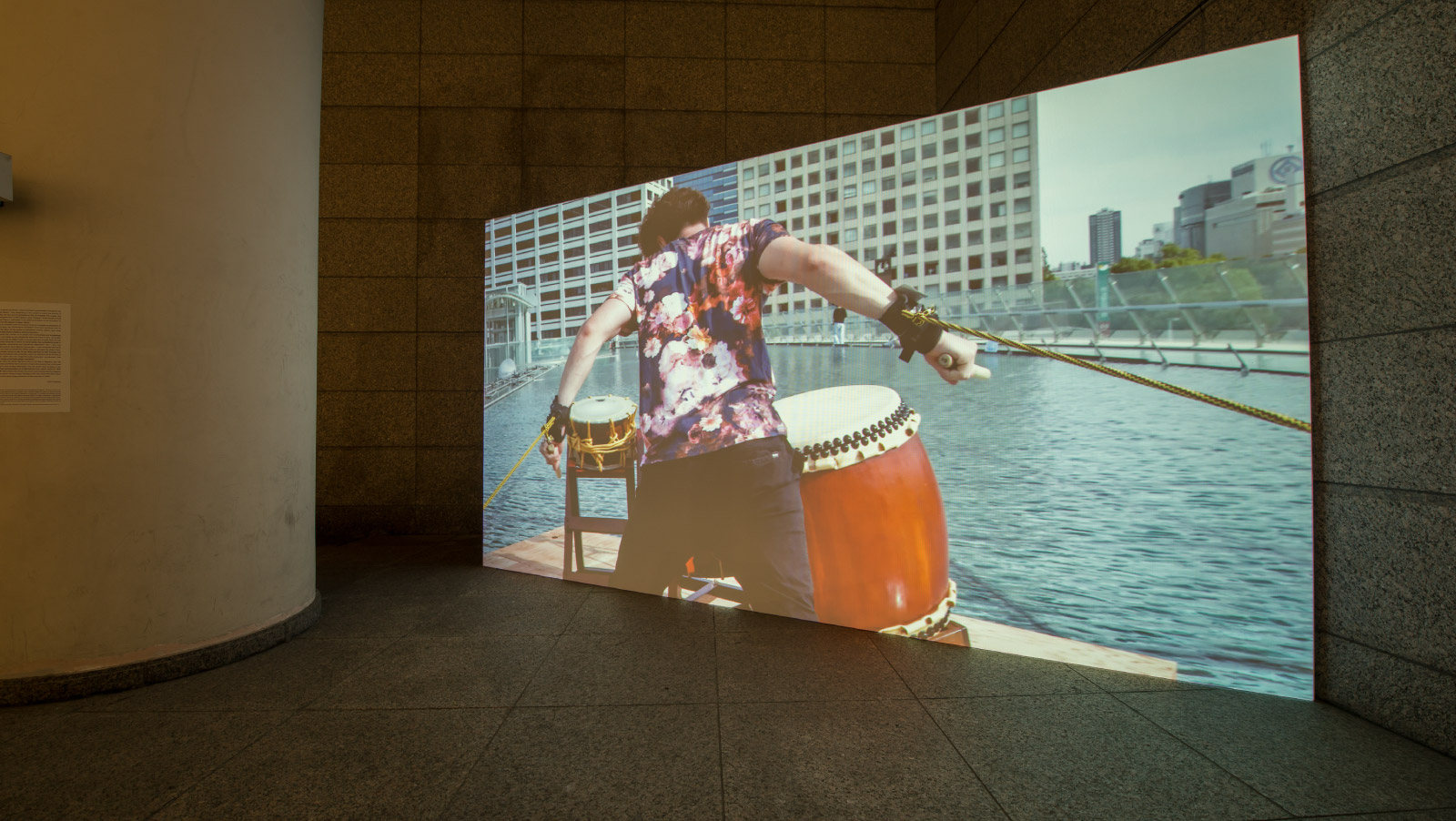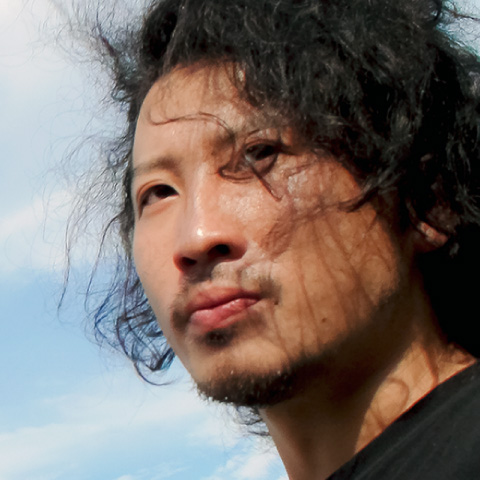
2679
Installation view at Aichi Triennale 2019
2679, 2019
Photo: Takeshi Hirabayash
Woodstock 2017 is a video made in 2017. It shows four Caucasian males performing "The Star-Spangled Banner," the national anthem of the USA, while being tied together with ropes. The scenery looks funny at first, but when watching the performers' desperate attempts without the slightest smile, and learning about how the artist witnessed the birth of the Trump administration during his stay in the US, the work suddenly takes on a rather serious notion.
Appearing in 2679, a companion new piece to Woodstock 2017, are three performers playing Japanese instruments while again being tied to each other with ropes. The performers have British-Japanese, New Zealandish-Japanese and Korean-Japanese roots respectively, which reminds the viewer of the fact that there are all kinds of people with different roots living in Japan.
The performances in a tied-up state hint at the situation of mutual monitoring by way of social media and other technologies, in a contemporary society in which self-regulation seems to be facilitated quite automatically. Both of these works are themed around musical performances as physical forms of expression and media that firmly connect communities through imagination, but they can at once be understood as symbolizing the mechanisms of control and oppression.
KATO Tsubasa
- Born 1984 in Saitama, Japan
- Based in Tokyo, Japan

Kato Tsubasa is known for Pull and Raise, an ongoing project in which he works together with local communities, both in Japan and abroad, to raise up simple large-scale wooden structures using ropes. These structures reflect the hardships each community has faced, from natural disasters and urban development to resource extraction. He has shown new developments in his recent works, which include a piece in which struggling, rope-bound musicians perform the national anthem of the United States. While all of his collaborations, which are fraught with physicality, are implemented as one-time-only performances, Kato films the projects from multiple angles and makes them into video pieces. By re-presenting in video the participants' solidarity and sense of accomplishment, he evokes the fragility and ephemerality of temporary communities, as well as the ambiguous flows of communication, such as its tensions and its releases.
Selected Works & Awards
| 2018 | Catastrophe and the Power of Art, Mori Art Museum, Tokyo, Japan |
| 2017 | Reenacting_history Collective Actions and Everyday Gestures, National Museum of Modern and Contemporary Art, Gwacheon, South Korea |
| 2016 | Uprisings, Jeu de Paume, Paris, France |
| 2016 | Spider’s Thread – Spinning images of Japanese beauty, Toyota Municipal Museum of Art, Aichi, Japan |
| 2015 | Time of Others, The National Museum of Art, Osaka, Japan |
Map
Aichi Arts Center (B2F South Stairs)
Address
1-13-2 Higashisakura,Higashi-ku, Nagoya
461-8525 JAPAN
Access
・5 minutes on foot from Sakae-Machi Station on the Meitetsu Seto Line.